#Creosote Bush (Larrea tridentata)
Video
Getting Out There (Big Bend National Park) by Mark Stevens
Via Flickr:
A look to the southeast across the Big Bend National Park landscape at the main northern entrance. Off in the far distance are ridges and peaks of the Sierra del Carmen in Mexico.
#Along Roadside#Along U.S. Route 385#Along US Hwy 385#Azimuth 109.40#Big Bend National Park#Big Bend Ranges#Big Bend and Carlsbad Caverns National Parks#Blue Skies#Blue Skies with Clouds#Chihuahuan Desert#Creosote Bush (Larrea tridentata)#Day 1#Desert#Desert Landscape#Desert Mountain Landscape#Desert Plant Life#DxO PhotoLab 4 Edited#Hillsides#Intermountain West#Landscape#Landscape - Scenery#Looking SE#Looking into Mexico#Mountains#Mountains in Distance#Mountains off Outside#Mountains off in Distance#Nature#Nikon D850#Outside
4 notes
·
View notes
Text
In the Sonoran Desert of Arizona and Northwest Mexico, many long-time residents claim that with the onset of the summer’s monsoonal rains, a feeling of elation and relief comes as fragrances fill the air in a way that makes it seem as though “the desert smells like rain.”
For decades, geologists, botanists, atmospheric scientists, and ecologists have debated the causes and triggers of this euphoric sensation. Some scientists have focused on fragrances emitted by cryptogamic or biological soil crusts during rains, while other have focused on the terpentine-like smell of the creosote bush known in Sonoran Spanish as hediondilla, ‘the little stinker.” But now two scientists from the University of Arizona [...] propose a novel, but more comprehensive answer:
The Sonoran Desert flora is one of the richest in the world in plants that emit fragrant volatile oils, and many of those fragrances confer stress-reducing health benefits to humans, wildlife, and the plants themselves. [...] [T]he biogenic volatile organic compounds (BVOCs) [...] evolved to protect plants from damaging solar radiation, heat waves, drought stress and herbivores [...].
---
Initially, desert scientists focused their attention on an earthy fragrance called petrichor that is emitted from the biological soil crusts by a compound called geosmin. Geosmin underlies the earthy taste of beetroots, with notes like eucalyptus, cinnamon, and cloves and can be detected by the human nose at concentrations as low as 400 parts per trillion. It is secreted from dead microbes in the soil crusts of many different kinds of landscapes but is now known to be emitted only sporadically in Sonoran Desert soils after summer rains.
---
Ecologists who studied the North American deserts then tried to explain this phenomenon through a “single cause” focus on one of the most common plants in the Mohave, Sonoran and Chihuahuan desert: Larrea tridentata, known in English as the creosote-bush. Curiously, it emits more than 35 distinct terpenes and other BVOCs, some of which (like trans-caryophyllene) are generated by an endophytic fungus growing “hidden” within the plant’s tissues. With the onset of monsoons, the high density of shrubs forming “creosote flats” emit terpentine-like fragrances (like isoprene) as potent as any botanical emissions into the atmosphere. Nevertheless, this dominant plant is by no means the only major emitter of BVOCs that give Sonoran Desert habitats their renowned fragrances.
---
The new research from the Desert Laboratory on Tumamoc Hill has found more than 60 species of 178 native plants in the ancient ironwood-giant cactus forests of the Sonoran Desert which emit fragrant biogenic volatile organic compounds (BVOCs) immediately before, during and after rainstorms. [...] From these desert species, more than 115 volatile oils have been identified, as high a number as is known from any biogeographic region in the world. In particular, the researchers Gary Nabhan, Eric Dougherty and Tammi Hartung identified more than 60 potent fragrances emitted from the foliage and flowers of desert plants during the monsoonal rainy season of the iconic “Sonoran Desert summer.”
The authors hypothesize that a “suite” of 15 particular BVOCs emitted from this diversity of desert plants during the monsoons may function synergistically to generate tangible health benefits. [...].Their accumulation in the atmosphere immediately above desert vegetation can reduce exposure to damaging solar radiation in ways that protect the desert plants themselves, the wildlife which use them as food and shelter, and the humans who dwell among them.
---
Text by: Gary Paul Nabhan. “Why Does the Desert Smell Like Rain? New UA Research Suggests the Diverse “Osmocosm” of the Sonoran Desert.” Published under the “News” section online at University of Arizona Press. 13 April 2022.
177 notes
·
View notes
Text
Sonoran Desert Plants & Their Magic
Creosote Bush
Larrea tridentata
A.k.a Stinkweed, Chaparral, and Hediondilla
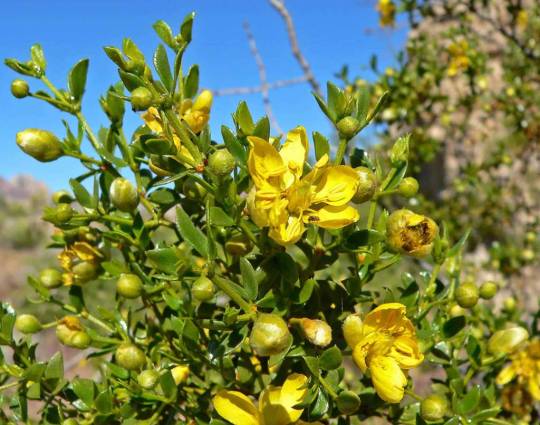
image source
Creosote is a prominent plant in the southwestern portion of North America, it's range includes the Sonoran, Mojave, and Chihuahuan deserts.
Correspondences
• Element: Water
• Powers: Permanence, longevity, healthy isolation (living alone with a purpose i.e introspection or healing), developing a "tough skin", overcoming challenges, logic, reasoning, order
Mesquite Tree
Prosopis velutina
A.k.a Velvet Mesquite

image source
Velvet Mesquite is found naturally, and plays an important ecological role, in the Sonoran Desert. They grow 20-50 feet in height, or more in well watered areas, less in dry grasslands. The roots far extend the height of the tree, as such Velvet Mesquite can access water sources that are deeper than most plants can reach.
Correspondences
Planet: Saturn
Element: Water, Earth
Powers: Healing, protection, cleansing, purification
Chuparosa
Justica californica
A.k.a Hummingbird Bush
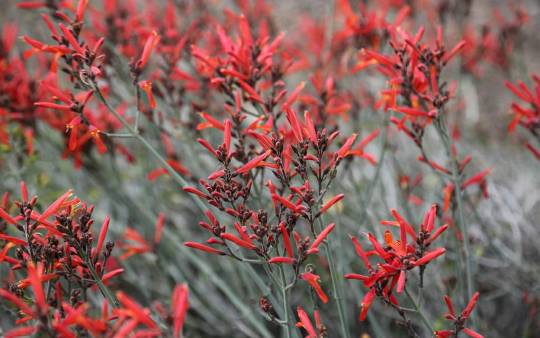
image source
Chuparosa is a flowering bush native to the deserts of Southern California, Arizona, and Northern Mexico. Chuparosa and Chiporosa are both colloquial Spanish terms for "hummingbird". For a short while this shrub produces succulent leaves, it then loses those leaves and grows plentiful tubular flowers. These flowers are generally shades of bright red, but can also be found in shades of yellow. Hummingbirds frequent this low bush to feed on the sweet nectar hidden in the flowers.
Correspondences
Planet: Venus
Powers: Beauty, self-esteem, romance, sexual energy, love, new beginnings, positivity
Brittle Bush
Encelia farinosa
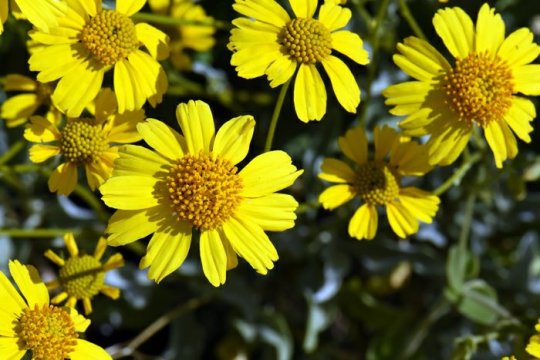
image sorce
Brittle bush is a rather common little shrub found in Northern Mexico, Arizona, Southern California, Nevada, and Utah. It's name comes from the brittleness of the stems. A Spanish name for this plant is "incienso" because the dried sap was burned by the early Spanish missions in the New World as incense.
Correspondences
Planetary: Sun
Element: Earth
Powers: Healing, cleansing, luck, empathy, friendship, protection, banishing sickness
Desert Lavender
Hyptis emoryi
A.k.a Bee Sage or Bushmints

Image source
Desert Lavender is found in Arizona, Nevada, California, and Northwestern Mexico. It is a medium to tall perennial shrub that is favored by honeybees in early spring. The violet-blue flowers are profuse along the main stem and side branches.
Native American tribes like the Akimel O'Odham saw this plant as a "pure and holy plant that cleanses all evils away from one's spirit". It's traditional Native American uses include smudge wands that were burned to cleanse the body of diseases and stop heavy menstruation and internal bleeding.
Correspondences
Element: Earth
Animal: Honeybees
Powers: Spirits, purity, banishing, warding, psychic energy & ability, cleansing, protection
Ephedra
Ephedra fasciculata
A.k.a Mormon Tea or Arizona Ephedra

image source
This plant is found mainly in the Mojave, Colorado, and Sonoran deserts. It thrives in creosote bush scrub. Historically it has been used as an alternative to coffee.
Correspondences
Element: Air
Planet: Earth
Powers: Protection, healing, positive energy, cleansing, friendship, happiness, purity, alertness & focus
Yellow Bells
Tecoma stans
A.k.a Yellow Trumpetbush

image source
Yellow Bells is an attractive ornamental vine native to the Americas, and is the official flower of the United States Virgin Islands. It is hardy in nature and can be grown nearly anywhere, becoming an invasive species in some areas. It's large yellow flowers attract many creatures such as hummingbirds, bees, and butterflies.
Correspondences
Element: Earth
Powers: Resilience, dominance, strength, healing, cleansing, banishment, cursing, retaliation
Source 1 | Source 2 | Source 3 | Source 4 |
Source 5 | Source 6 | Source 7 | Source 8 | Source 9 | Source 10 |
#KitchPosting#ReginaSolem#Sonoran Desert#Magic#desert witch#desert magic#some is UPG some is traditional information#herbalism#plant magic#UPG#i hope my sources worked...
51 notes
·
View notes
Text
Why you should avoid kava and 9 other risky dietary supplements
One-third of Americans say they believe supplements have been tested by the Food and Drug Administration for safety, according to a 2022 nationally representative survey by Consumer Reports of 3,070 adults in the United States. But the FDA doesn’t approve or test the safety or effectiveness of any supplement before it enters the U.S. market.
After consulting with a panel of doctors and researchers, Consumer Reports says you should avoid these 10 risky supplements. In general, risk increases the larger the dosage and the longer the supplement is taken. Also beware of illegal or unapproved drug ingredients, such as tianeptine, methylsynephrine and phenibut.
Chaparral
Also called: creosote bush, greasewood, Larrea divaricata, Larrea tridentata, larreastat
Claimed benefits: weight loss; eases inflammation; treats colds, infections, rashes, cancers
Potential harms: kidney problems, liver damage
Coltsfoot
Also called: coughwort, Farfarae folium leaf, foalswort, Tussilago farfara
Claimed benefits: relieves cough, sore throat, laryngitis, bronchitis, asthma
Potential harms: liver damage, possible carcinogen
Comfrey
Also called: blackwort, bruisewort, slippery root, Symphytum officinale
Claimed benefits: relieves cough, heavy menstrual periods, stomach problems, chest pain; treats cancer
Potential harms: liver damage, cancer
Germander
Also called: Teucrium chamaedrys, Teucrium viscidum
Claimed benefits: weight loss; alleviates fever, arthritis, gout, stomach problems
Potential harms: liver damage, hepatitis
Greater celandine
Also called: celandine, Chelidonium majus
Claimed benefits: alleviates stomach ache
Potential harms: liver damage
Kava
Also called: ava pepper, kava kava, Piper methysticum
Claimed benefits: eases anxiety, helps sleep
Potential harms: liver damage, exacerbates Parkinson’s disease and depression, impairs driving
Lobelia
Also called: asthma weed, Lobelia inflata, vomit wort, wild tobacco
Claimed benefits: helps respiratory problems, smoking cessation
Potential harms: nausea, vomiting, diarrhea, tremors, rapid heartbeat, confusion, seizures, hypothermia, coma
Pennyroyal oil
Also called: Hedeoma pulegioides, Mentha pulegium
Claimed benefits: improves breathing problems, digestive disorders
Potential harms: liver and kidney failure, nerve damage, convulsions
Usnic acid
Also called: beard moss, tree moss, usnea
Claimed benefits: weight loss, pain relief
Potential harms: liver injury
Yohimbe
Also called: Johimbi, Pausinystalia yohimbe, yohimbine, Corynanthe johimbi
Claimed benefits: treats low libido and erectile dysfunction, depression, obesity
Potential harms: raises blood pressure; causes rapid heart rate, headaches, seizures, liver and kidney problems, heart problems, panic attacks
Source: Consumer Reports Inc.
Consumer Reports is an independent, nonprofit organization that works side by side with consumers to create a fairer, safer, and healthier world. CR does not endorse products or services, and does not accept advertising. Read more at ConsumerReports.org.
8 notes
·
View notes
Photo
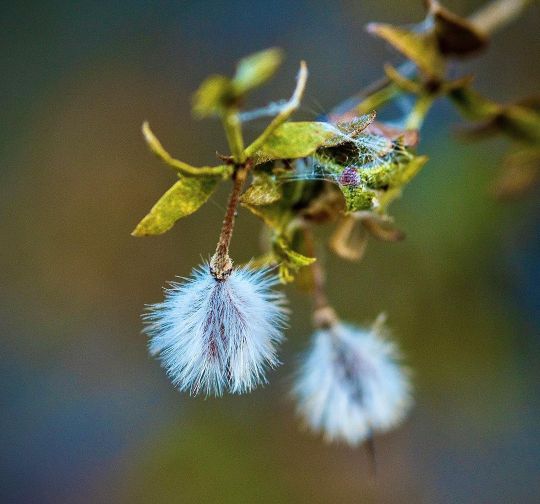
Larrea tridentata, is also called creosote bush or greasewood. Medicinally it is known as chaparral. In Spanish it is known as gobernadora because it can secure more water by inhibiting the growth of nearby plants. In Sonora, it is more commonly called hediondilla which is related to hediondo, which means ‘smelly’. This is fitting as the plant is largely responsible for the smell of monsoon rains in the Sonoran desert. . . . . . #creosote #creosotebush #greasewood #chaparral #desertrain #yes_busa #rebels_united #rebels_nature #shotonnikon #shotonnikond3500 #tamronlens #tamron90mm #tamron90mmmacro (at Phoenix, Arizona) https://www.instagram.com/p/Cj1lwA9rf4Y/?igshid=NGJjMDIxMWI=
#creosote#creosotebush#greasewood#chaparral#desertrain#yes_busa#rebels_united#rebels_nature#shotonnikon#shotonnikond3500#tamronlens#tamron90mm#tamron90mmmacro
9 notes
·
View notes
Text
Spring Flowers, Tucson, Part 11: Creosote Bushes (Larrea tridentata)
Yellow blooms on the Creosote!

View On WordPress
3 notes
·
View notes
Text
Herbal Remedies for Lichen Planus
Lichen planus is an autoimmune disease that affects the skin and mucus membranes. When the skin is affected, it results in itchy, red spots on the extremities. The following list of herbs can help soothe the itching, preventing potential scarring or infection from scratching.
Herbs should be finely ground and added to a carrier compound, such as coconut oil, vegetable oil, or unscented lotions without added dyes, and applied topically. Be aware that some people can be allergic to one or more of the following ingredients, so if you’re preparing something for someone else, be sure to inquire about their allergies.
[Agrimony herb] Agrimonia eupatoria
[Aloe Vera gel] Aloe barbadensis
[Bayberry bark] Morella cerifera
[Bigleaf Sagebrush leaf] Artemisia tridentata
[Bistort leaf] Polygonum spp.
[Blackberry/Raspberry leaf and root] Rubus spp.
[Black Tea steamed leaf] Camellia sinensis
[Blueberry/Bilberry leaf and fruit] Vaccinium spp.
[Calendula flower] Calendula officinalis
[Comfrey leaf] Symphytum officinale
[Creosote Bush herb] Larrea tridentata
Curcumin
[Ginger] Zingiber officinale rhizome
[Hawthorn leaf, flower, and fruit] Crataegus spp.
[Hollyhock leaf or root] Alcea rosea
[Hops] Humulus lupulus strobile
[Licorice root] Glycyrrhiza glabra
[Marshmallow leaf or root] Althaea officinalis
[Meadowsweet flowering top] Filipendula ulmaria
[Purslane leaf] Portulacca oleracea
[Thunder God Vine root] Tripterygium wilfordii
[Tormentil herb] Potentilla tormentilla herb
[Tumeric] Curcuma longa rhizome
[Yarrow flowering top] Achillea millefolium
#herbal magic#herbal remedies#herbs#witchcraft#green witch#witchy things#witchblr#book of shadows#grimoire#magic#beginner witch#green witchcraft#herbal properties#lichen planus
6 notes
·
View notes
Text

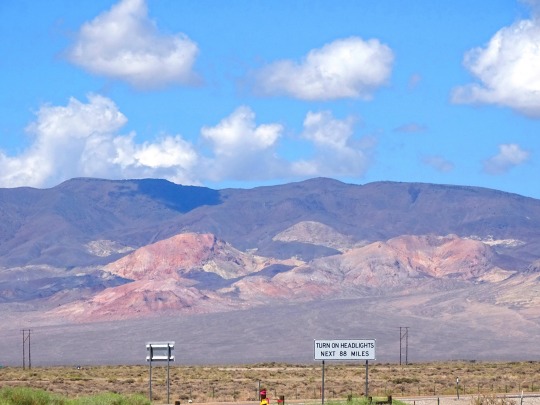

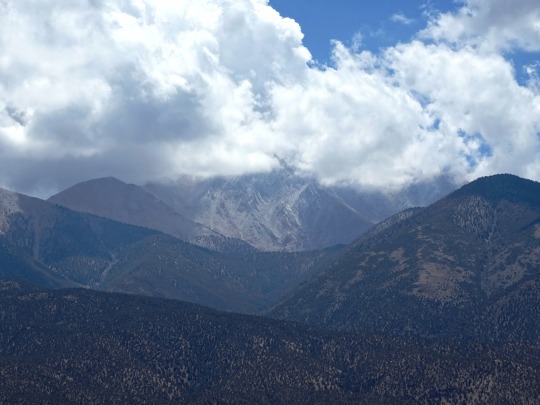
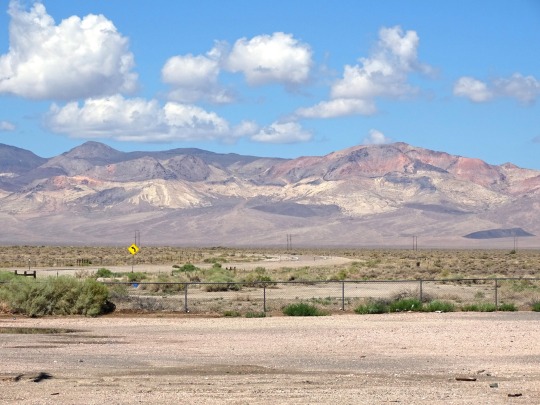


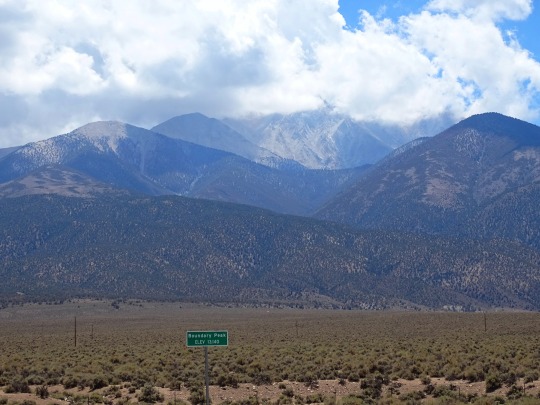
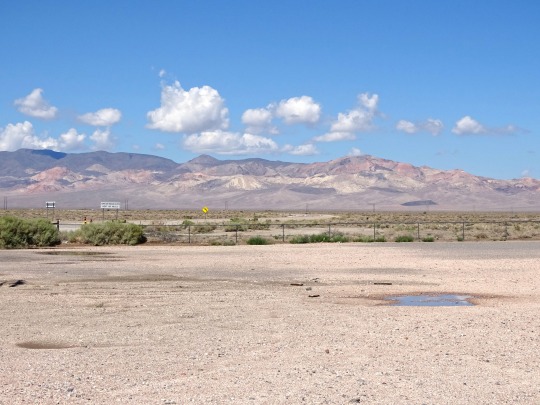
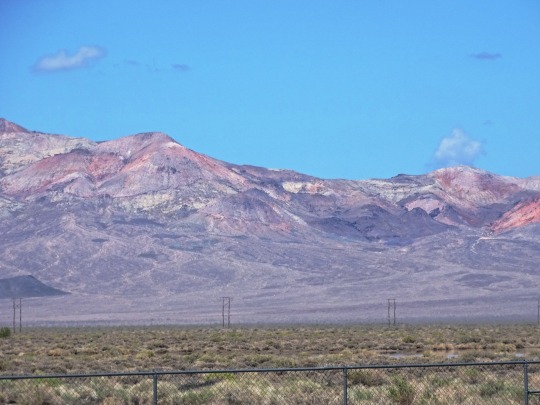
West-Central Nevada Desert (No. 2)
The Great Basin Desert is defined by its animals and plants, yet the boundaries are unclear.
Scientists have different definitions of the Great Basin Desert, which are often defined by negatives. J. Robert Macey defines the "Great Basin scrub desert as lacking creosote bush." The Great Basin Desert includes several arid basins lacking Larrea tridentata (chaparral) such as the "Chalfant, Hammil, Benton, and Queen valleys," as well as all but the southeast portion of the Owens Valley. Conversely, the "Panamint, Saline, and Eureka valleys" have creosote bush, unlike the Deep Springs Valley which includes part of the Great Basin scrub desert.
The pattern of 'basin and range' with adjacent basins and ranges in this region results in incredible biological diversity. Climate, elevation, soil type, and many anthropogenic variables greatly influence the diversity and distribution of shrubland, grassland, and woodland communities in the desert. Across the high desert there are numerous sub-climates correlating to the varied elevations. Heading from the valley bottoms to the mountain peaks one will encounter constantly changing combinations of plant and animal species making up some 200 distinct biological communities. These communities can be generally grouped into six general communities or "life zones".
Source: Wikipedia
#Millers Rest Area#West-Central Nevada Desert#Nye County#travel#original photography#vacation#tourist attraction#landmark#cityscape#USA#summer 2022#street scene#clouds#sign#mountains#Highway 95#landscape#desert#countryside#Hwy 95#Nevada#Great Basin Desert#flora#Boundary Peak#Esmeralda County#White Mountains#Highway 6
1 note
·
View note
Text
Foot Trooper Review - The Ultimate Foot Care Solution
➢ Product Name — Foot Trooper
➢ Main benefits –Cure Foot Fungus
➢ Composition —Natural organic compound
➢ Side effects – NA
➢ Rating: —5/5
➢ Availability —Online
➢ Where to buy –Click here to speed up your order from the official website
Foot Trooper is a natural deodorant spray cream that actively eliminates foot fungus. The product is offered on the manufacturer's official website at a competitive price. Its price stays unchanged. Those who have successfully overcome onychomycosis already possess more than 7,000,000 copies of the book. Client satisfaction with Foot Trooper appears to be quite good, judging by forum feedback and opinions. There are virtually no negative comments in the testimonials.
>> Click here to buy Foot Trooper at low prices <<
Dr. Juan Fernandez has more than 20 years of professional expertise as a mycologist. He believes that Foot Trooper is one of the best organic products for the active disinfection of foot skin after examining the product's composition. Its light recipe is comprised of natural substances such as tea tree oil, Thuja tincture, Neem, and Creosote bush extract (Larrea tridentata). These strong antibacterial and antifungal medicines eliminate spores of foot fungi gently, facilitating a simple skin detox. The product has successfully completed the required clinical studies, reaching a 95% success rate. It carries a Quality Certificate.
Foot Trooper – What Is It and What Role Does It Play?
Foot Trooper is an all-natural deodorant spray cream that actively eliminates onychomycosis-caused foot fungus. According to data supplied by the producer, this is one of the most popular organic athlete's foot treatments in Mexico. Already, almost seven million copies have been given to clients with tremendous benefits. Several mycologists, including Dr. Juan Fernandez, are astonished by its activity. The treating physician believes that Foot Trooper completely eradicates the harmful germs. It restores the skin's structure, texture, and colour with a soothing effect. There are no reported adverse effects.
The deodorant spray cream has been subjected to stringent clinical testing. It was able to demonstrate its 95% efficacy and is deemed safe for all types of skin. In addition, a Certificate of Quality is provided as proof. Foot Trooper is a new-generation treatment for onychomycosis that employs natural chemicals and herbal therapies. It not only eliminates the germs. Foot Trooper promotes the active renewal of the skin, leaving it refined, silky, and supple.
Foot Trooper is an effective treatment for onychomycosis. The substance is formulated as a spray with substantial regenerative and drying properties. You can apply it on a daily basis to the damaged skin to get long-lasting improvement and satisfactory outcomes. Foot Trooper is comprised solely of natural ingredients, thus its continued usage will not result in any contraindications or other harmful side effects, unlike pharmaceuticals. This lubricating spray readily penetrates the upper layers of the epidermis and eliminates unwanted germs' yeast. Foot Trooper functions around-the-clock to dry the feet and restore the supple, smooth structure of the skin and nails. In addition, the treatment imparts a pleasant odour to the skin and normalises the colour of the nail plates.
>> Click here to buy Foot Trooper at low prices <<
Foot Trooper – Client Views
What do users typically express in their Foot Trooper comments and opinions? The majority of Foot Trooper customer reviews are good. Users frequently discuss the qualities and benefits of the anti-mycosis spray on various health-related online forums. Also, dermatologists recommend Foot Trooper with favourable opinions. On Facebook and Instagram, there are several posts about this topic. The spray appears to permanently alleviate the pain and symptoms of the bacterial infection on the foot. In addition, thoughts and comments indicate that Foot Trooper for foot fungus is effective and has no negative effects, unlike medications.
Benefits of the Antimycosis Spray
Occasionally, consumers describe some of the most significant benefits of Foot Trooper in their testimonies.
Advantages:
Reduces excessive foot perspiration; provides 24-hour odour prevention; treats and prevents foot fungus; promotes softer and healthier skin.
Disadvantages:
Foot Trooper is unavailable in pharmacies and shops; counterfeit versions of the real brand are accessible.
Foot Trooper Application Instructions
Please review the Foot Trooper usage instructions document. This is required for each client who wishes to consistently utilise the cure. Juan Fernandez, M.D., is an expert in the field of dermatology. Because he has tested Foot Trooper for mycosis, he is confident in its high quality. The soft spray appears to actively target and remove numerous skin diseases. Thus, the remedy's preventative capability is also quite significant.
So, how should Foot Trooper be applied for mycosis?
The directives are:
Cleanse your feet; spritz the skin with the solution;
Wait 1-2 minutes before putting on your socks; adhere to the programme for one month.
Contraindications
Foot Trooper is a herbal medication, thus its use does not result in adverse consequences. Customers can routinely apply the antibacterial spray without worrying about potential health risks or complaints.
Composition
Foot Trooper's formulation for mycosis is entirely natural. The spray's particular formulation contains chemicals that soothe and protect your skin from infections. This is why the remedy's total effectiveness is so high.
>> Click here to buy Foot Trooper at low prices <<
Ingredients in Foot Trooper
Tea Tree Oil is a potent antifungal and antimicrobial that occurs naturally. The fungus and its spores are eradicated. Moreover, it kills microorganisms; Thuja Tincture's active ingredient soothes itching and pain. Moreover, it disinfects the skin and improves the health of the nails; Neem – boosts the skin's immunity and prevents reinfection. In addition to relieving itching and peeling, Larrea Tridentata — the active component – lowers sweat, thereby eliminating odour. Moreover, it moisturises and soothes the skin.
Conclusion
The novel and complicated bio-remedy for mycosis, Foot Trooper, is a potent treatment for removing foot fungus. The product comprises solely natural compounds with demonstrated health benefits and no adverse effects. This is the reason why many Mexican clients post excellent reviews and testimonials on forums. The treatment is more innovative and dependable than competing brands on the market.
More Info:-
issuu
#footcare#foothealth#feetcare#exfoliatingfootscrub#soothingfootcream#footsocks#dryfeet#tiredfeet#footrejuvenation#pedicure#selfcare
0 notes
Text
Foot trooper
Description:
Foot Trooper is quick and easy to use. To apply it you must first prepare your feet. ★Wash and dry them thoroughly to remove germs and dirt that may have accumulated during the day. ★ Apply the spray evenly over the entire surface of the foot. ★After applying the spray, rub into the skin for a minute or two until completely absorbed. ★ Repeat this cycle daily, preferably just before bedtime, for about a month.

Features & details:
trooper, a crushing victory over your complexes!Keeps feet fresh for up to 24 hours.Prolongs the life of your shoes.
Product information:
Manufacturer Rosa Elena Dueñas S.A. de C.V.ASIN B0BHZPKF4LCountry of Origin MexicoCustomer Reviews 4.5 out of 5 stars 3ReviewsBest Sellers Rank #28,668 in Beauty & Personal Care (See Top 100 in Beauty & Personal Care)#92 in Foot Creams & Lotions

Important information Ingredients :
Thuja (Thuja occidentalis) tincture, Larrea tridentata (Creosote bush) leaf extract, Azadirachta Indica (Neem) Leaf extract, Melaleuca Alternifolia (Tea Tree) Leaf oil, Glycerin, Aqua (Water), Alcohol
1 note
·
View note
Video
Kit Mountain, Cliffs of the Sierra Ponce and the Santa Elena Canyon (Big Bend National Park) by Mark Stevens
Via Flickr:
A setting looking to the west while taking in views across desert and mountains present at Sotol Vista Overlook in Big Bend National Park. To create a panoramic, wide-angle image, I cropped a portion of the foreground and blue skies.
#1500 feet high#Azimuth 259#Big Bend National Park#Big Bend Ranges#Big Bend and Carlsbad Caverns National Parks#Blue Skies with Clouds#CaÐÑn de Santa Elena#Chihuahuan Desert#Chisos Mountains#Cliff Walls#Creosote Bush (Larrea tridentata)#Day 4#Desert#Desert Landscape#Desert Mountain Landscape#Desert Plant Life#DxO PhotoLab 5 Edited#Hillsides#Intermountain West#Kit Mountain#Landscape#Landscape - Scenery#Limestone Cliffs#Looking West#Looking into Mexico#Mesa de Anguilla#Nature#Nikon D850#No People#Outside
2 notes
·
View notes
Photo

First part of our outdoor area is getting close to completion! Most of the plants here are native to the area, but the rest are drought tolerant. We love sustainability and want our space to beautiful, but kind to the desert we all love. Let's go through some of the plants we've recently transplanted! Pencil Cholla (Cylindropuntia leptocaulis) is the spiky skinny cactus in the lower left. They're native to the South Western United States and Northern Mexico. Joshua Tree (Yucca brevifolia) a Joshua tree pup we hope does well! Joshua trees are not trees at all, but through convergent evolution have filled that niche in the Mojave, which is the only place they live. Lavender (Lavendula spp.) Did you know there are 47 species of lavender? And even more cultivars??! It's not native to California or even the Americas, but it is hardy, beautiful, and thrives in sandy soil. Creosote Bush (Larrea tridentata) The ubiquitous chaparral. You have definitely seen these before. We have a small seedling and a shrub that we hope make through transplant shock! Creosotes are one of the oldest living things on Earth capable of living thousands of years. The oldest, the King Clone, is estimated to be 11,700 years old. Roadkill Cactus (Consolea rubescens) these are our struggling cactus cuttings that the rabbits and squirrels have been making off with as snacks! The genus is native to the Caribbean and Florida. It's a nearly spineless cactus, but unlike the mainland prickly pears, grows into a tree like form, maturing with a woody trunk up to 20 feet tall. Cobweb House-Leek (Sempervivum spp.) Would you believe this succulent is actually native to the Alps? These are also called Hen and Chicks as they produce prodigious amounts of pups from the main plant! Thumb Cactus ( Mammillaria matudae) This is our little orphan! We found it, pot and all, just alone by the pool. Native to Mexico, they are not cold hardy and wouldn't have survived a frost. We adopted them happily! And it's just the beginning! . . . . . #highdesert #applevalley #victorville #hesperia #historicapplevalleyinn #havi #rockery #garden #smallbusiness #supportsmallbusiness #shopsmall #garden https://www.instagram.com/p/CfX6hvhrg5w/?igshid=NGJjMDIxMWI=
#highdesert#applevalley#victorville#hesperia#historicapplevalleyinn#havi#rockery#garden#smallbusiness#supportsmallbusiness#shopsmall
0 notes
Photo

La gobenadora.
Creosote bush (Larrea tridentata) at Tucson Botanical Gardens.
85 notes
·
View notes
Video
youtube

The “Creosote Bush” mentioned in this video, is Larrea Tridentata, also known as greaseweed. It is a desert plant, and is also one of the longest-living known organisms on this planet, with a particular bush in the Mojave Desert named “King Clone” being dated at nearly 12,000 years of age.
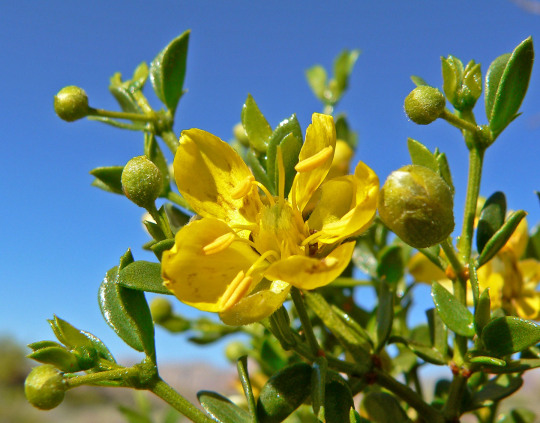
Its allelopathy is responsible for its uniform dispersal, and likely its longevity due to its ability to keep invaders out. While it could potentially be a nurse plant due to shade provision for seeds in the desert, its deep root system protects it from burrowing rodent herbivory, while shallow rooted plants surrounding it fall prey.
#king creosote#creosote#creosote bush#larrea tridentata#mojave desert#greaseweed#plants#nature#photography#video#photo#image#science#allelopathy#desert#green#yellow
3 notes
·
View notes
Text
Creosote bush sand dunes - Going Alone
Creosote bush sand dunes – Going Alone
The Creosote Bush is one of the most common and distinct plans of North America’s Mojave, Sonoran and Chihuahuan deserts. The plant is superbly adapted to desert life, and may be one of the longest-lived lifeforms on Earth, with the oldest Creosote age estimated at over eleven thousand years. The plant is this video was probably…
View On WordPress
#adventure#adventure on life#adversity#apathy#available light#challenge#Chihuahuan Desert#Creosote#Creosote bush#critical thinking#death#desert#difficulty#fortitude#good life#Indifference#Kurt Bell#Larrea tridentata#life#life adventure#life challenge#living#living well#LylesBrother#mindful#Mojave#Mojave Desert#oblivion#path of wildness#reason
1 note
·
View note
Photo


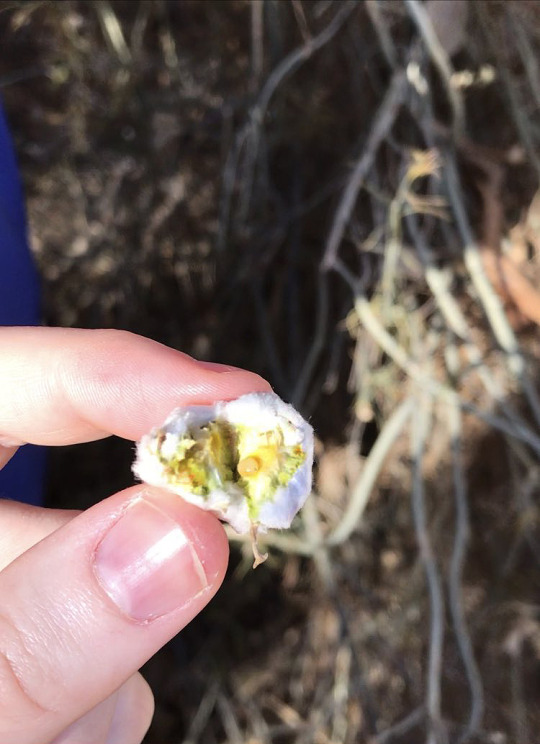

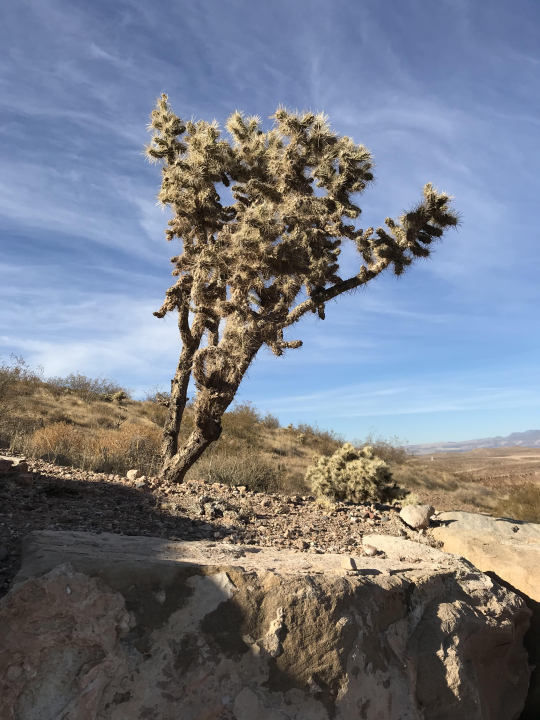

Desert Plants of Utah
The first three photos are of a shrub that I noticed had fluffy, cotton-like galls. When torn open, you could find a small, wiggling grub inside the gall. It is likely this plant is a type of goldenbrush/rabbitbrush (genus Ericameria). These plants are known to form galls due to fruit flies.
The yellow flower is likely a type of desert marigold (genus Baileya).
The cactus is called a cholla (’choy-ya’), genus��‘Cylindropuntia.’ They have papery sheaths on their spines, which I find interesting. They are a common sight in this desert.
Finally, the last bush is a creosote bush (Larrea tridentata), something that grows very plentiful around here, sometimes quite large. This plant has been around for thousands of years and Native Americans used to make use of it as a medicinal herb. It’s usually called ‘chaparral’ when being used as an herb. It was used for a wide range of ailments. Today it is possible to buy chaparral tea, but it is NOT WISE to drink it-- it is toxic. The U.S. Food and Drug Administration and Health Canada have both advised not taking this plant internally, as it can damage the liver and kidneys.
A very neat fact about the creosote bush is that in the California desert, a particular colony of this bush is thought to be one of the oldest living organisms on Earth. Measures have produced an age estimate of around 11,700 years.
2 notes
·
View notes
